Kalamkari With Krishna
Kalamkari originated in the modern-day states of Andhra Pradesh and Telangana several hundred years ago. It was first used to portray scenes from sacred texts such as the Mahabharata, Ramayana and Bhagavatam. These paintings were often displayed as decorative backdrops in temples, depicting the stories of deities.
Description
Kalamkari refers to the ancient style of hand painting done with a tamarind pen, using natural dyes. The name Kalamkari originates from Persian words qalam (pen) and kari (craftsmanship). Paintings made on fabric and fabric scrolls are mentioned in ancient Hindu, Buddhist and Jain literature. Under medieval Islamic rule, the term Kalamkari was derived from the words “kalam”, which means “pen” in Telugu, and “kari”, which means craftmanship. This became popular under the patronage of the Golconda sultanate. Motifs drawn in this ancient art of Kalamkari, include flowers, peacock, paisleys and also divine characters from Ramayana and Mahabharata.
Kalamkari colours are made mostly from vegetable dyes. The popularity of this exquisite form of painting has earned international repute for the state of Andhra Pradesh. Kalamkari art was the household occupation of several rural women and craftsmen in the ancient times and continues to be passed down from one generation to the next. Artforms like Kalamkari have started gaining more and more popularity in recent times because of their no-chemical process of creating printed textiles.
Additional information
| Weight | 500 g |
|---|---|
| Dimensions | 35 × 1 × 42.5 in |
| hsn-code | 9701 |
| set-of | 1 |
| Artwork | Original |
| color | STONE COLOR |
| Country of Origin | India |
| Created in | 2020 |
| Quality | 100% Hand-painted, Very Fine Work |
| Size | Medium – Longest Size Between 25” to 48” |
| Surface | Cotton Cloth |
| To be delivered as | Rolled |

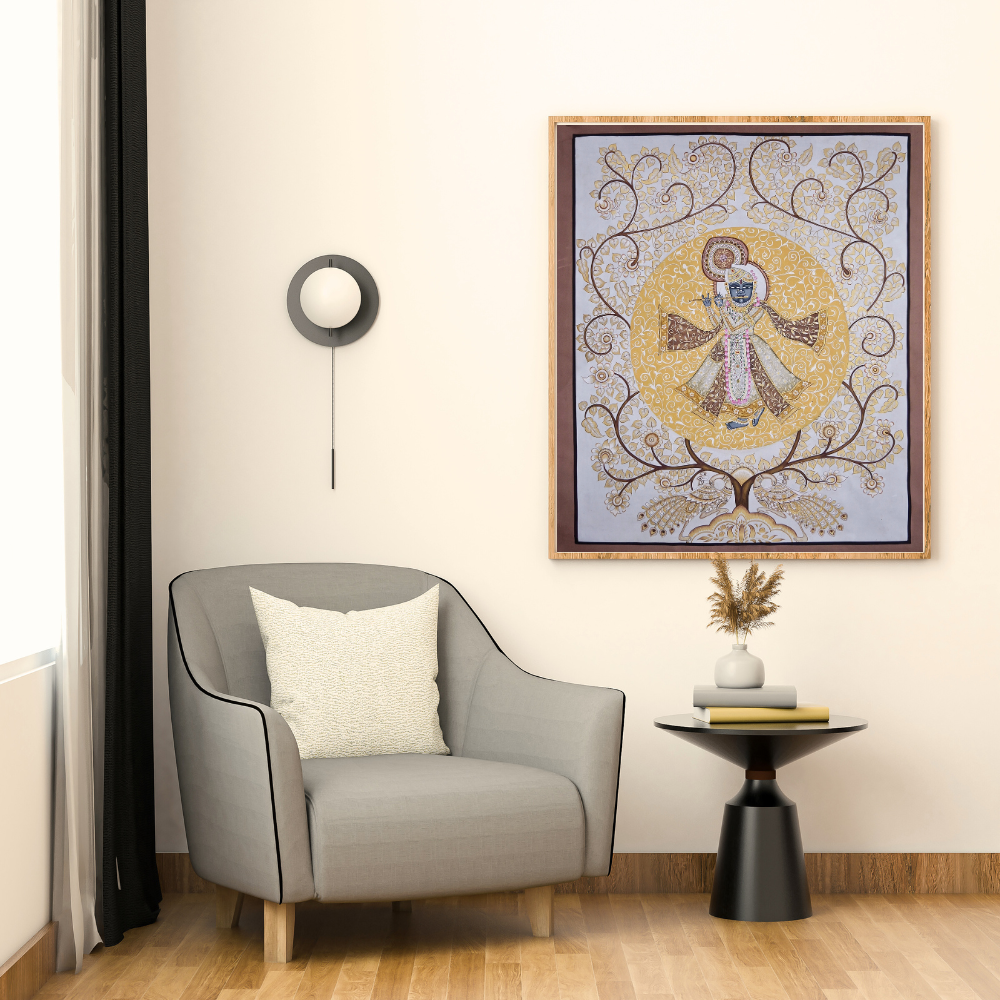
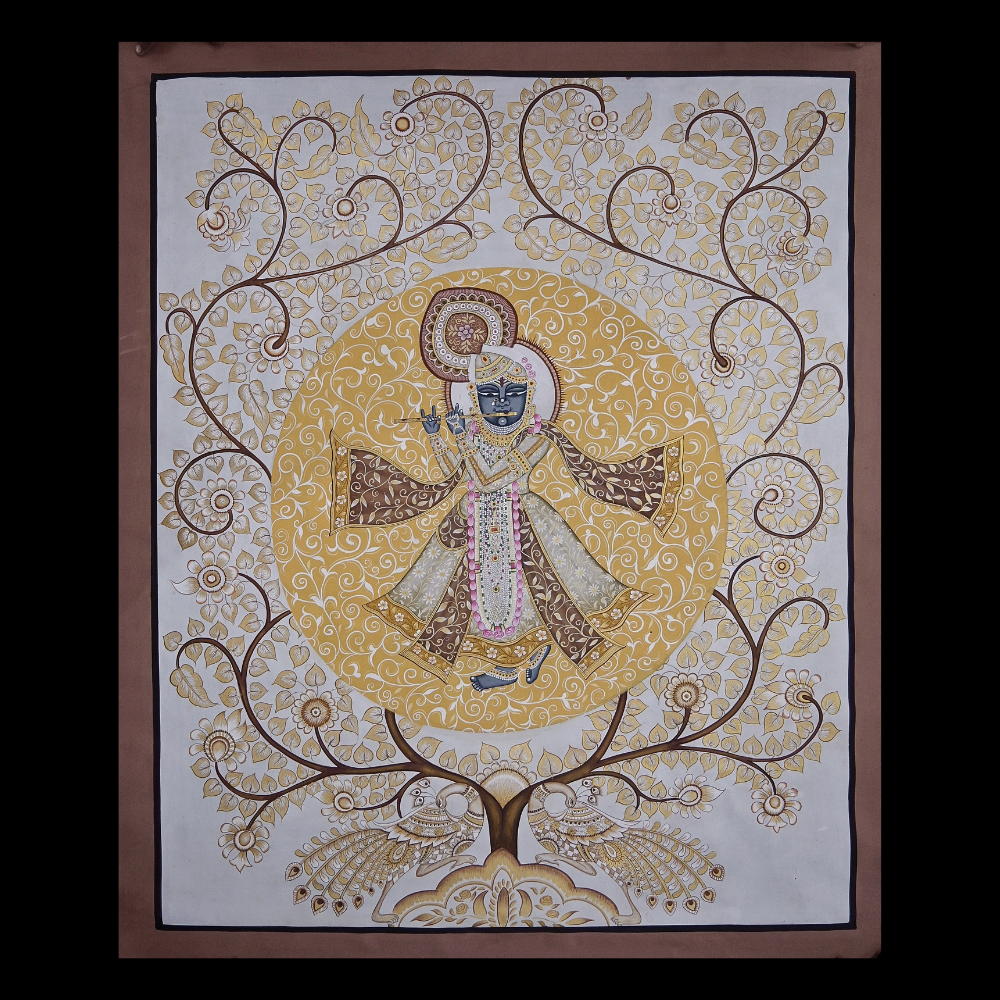
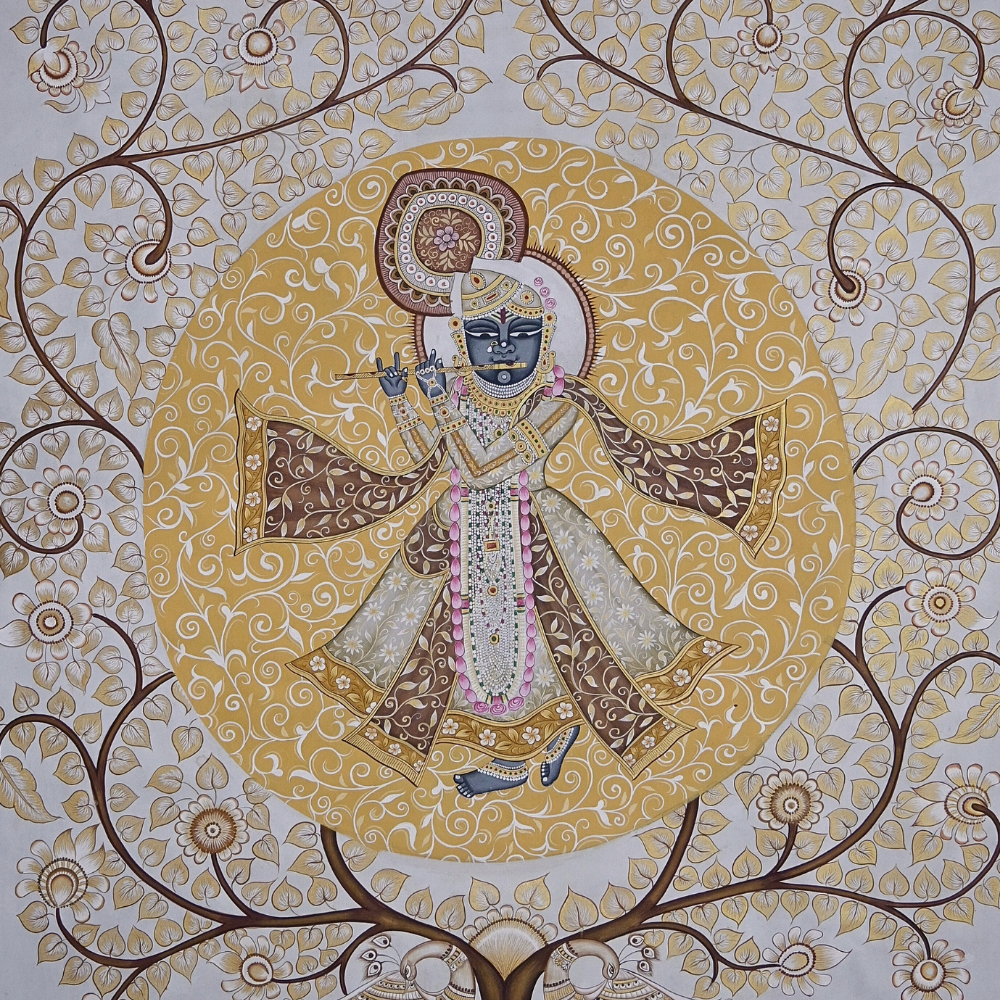
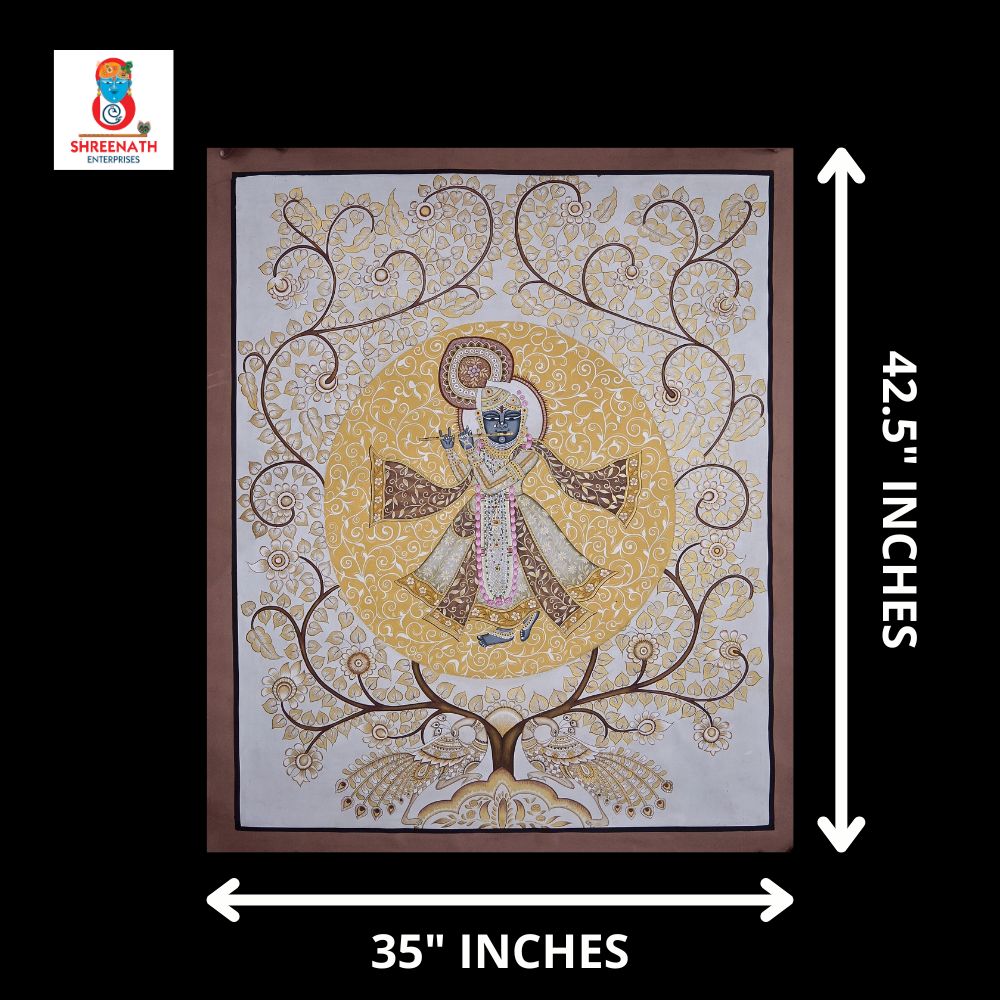
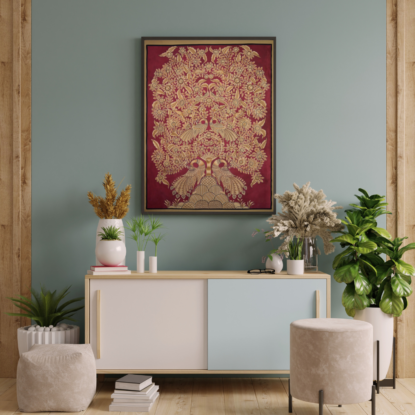
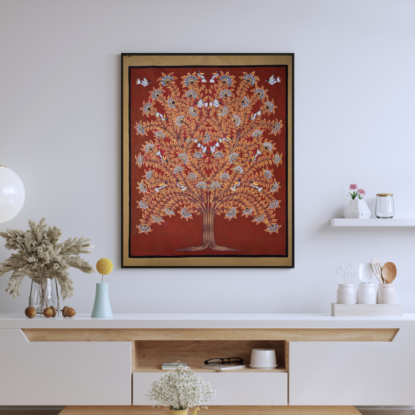
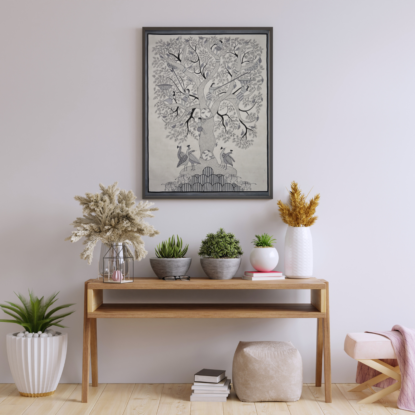
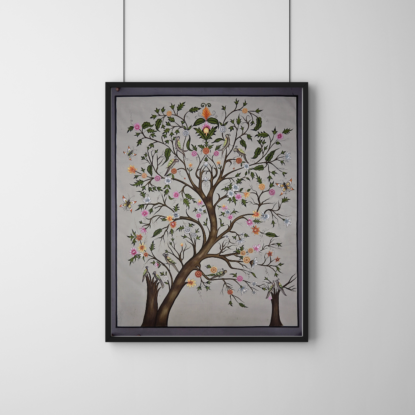
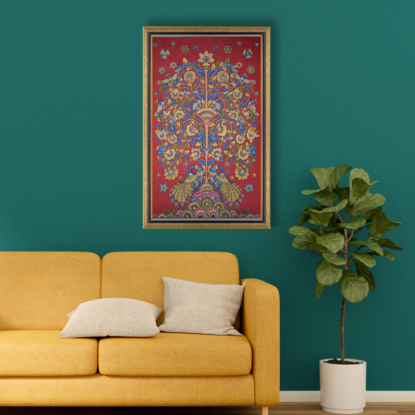
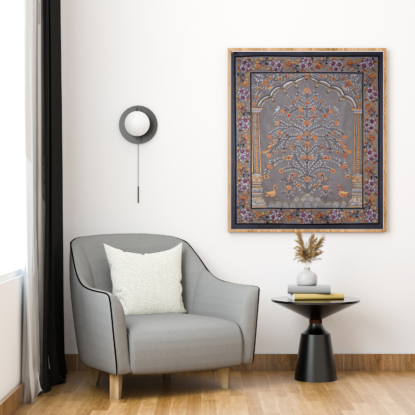
Reviews
There are no reviews yet.